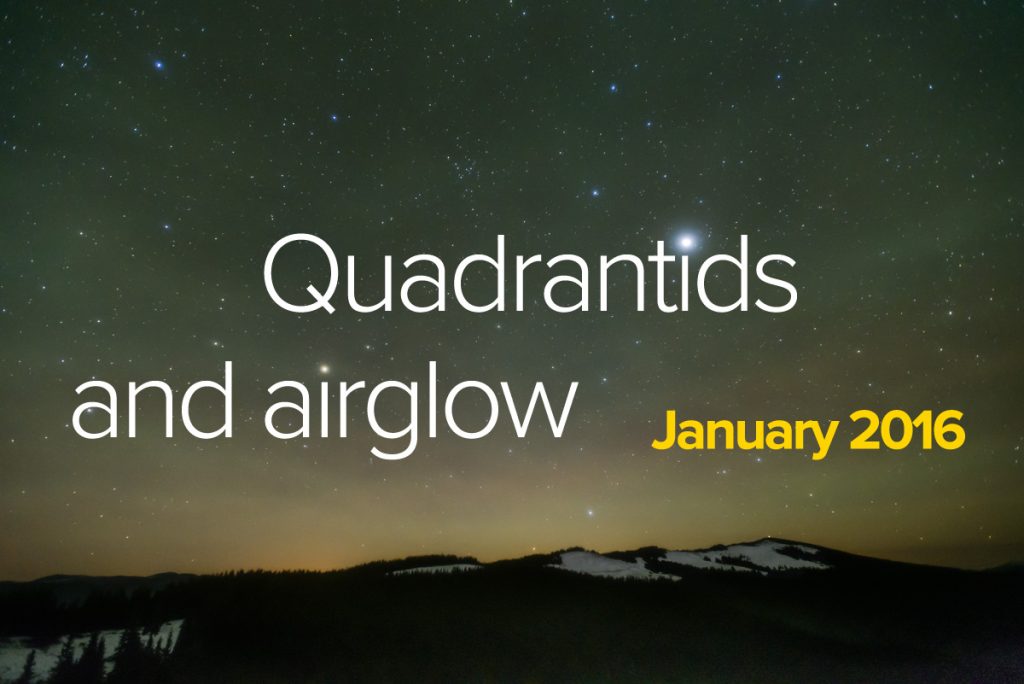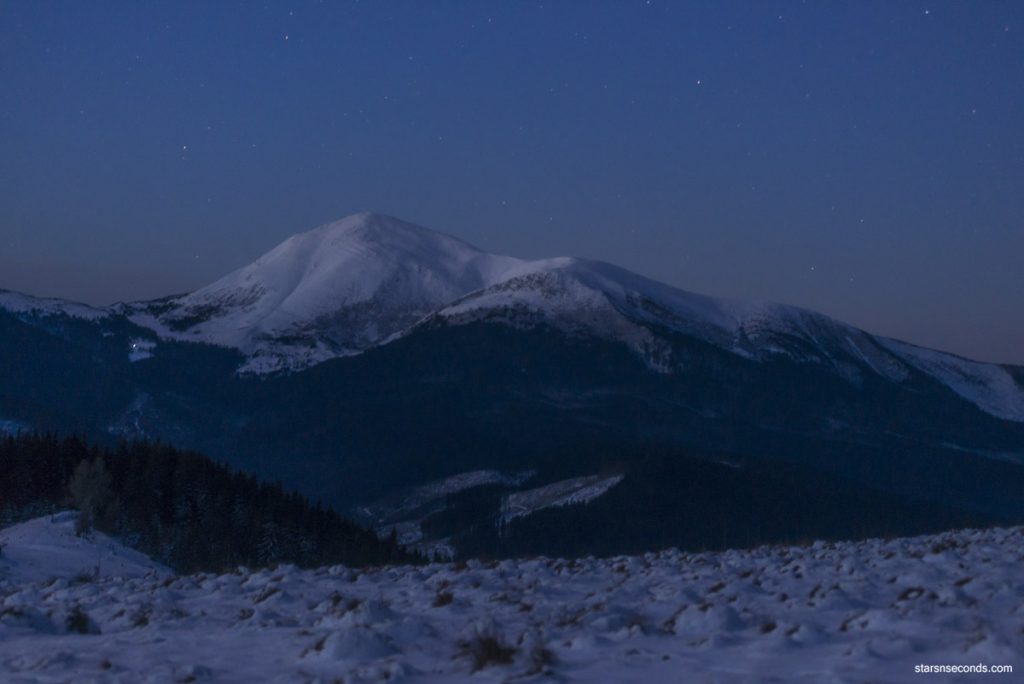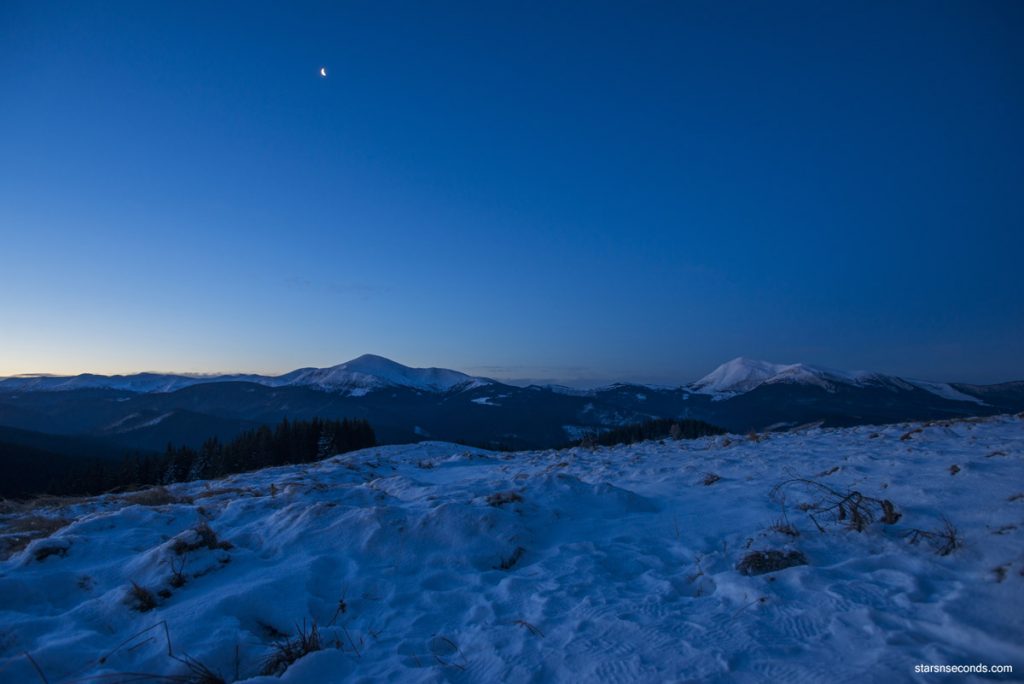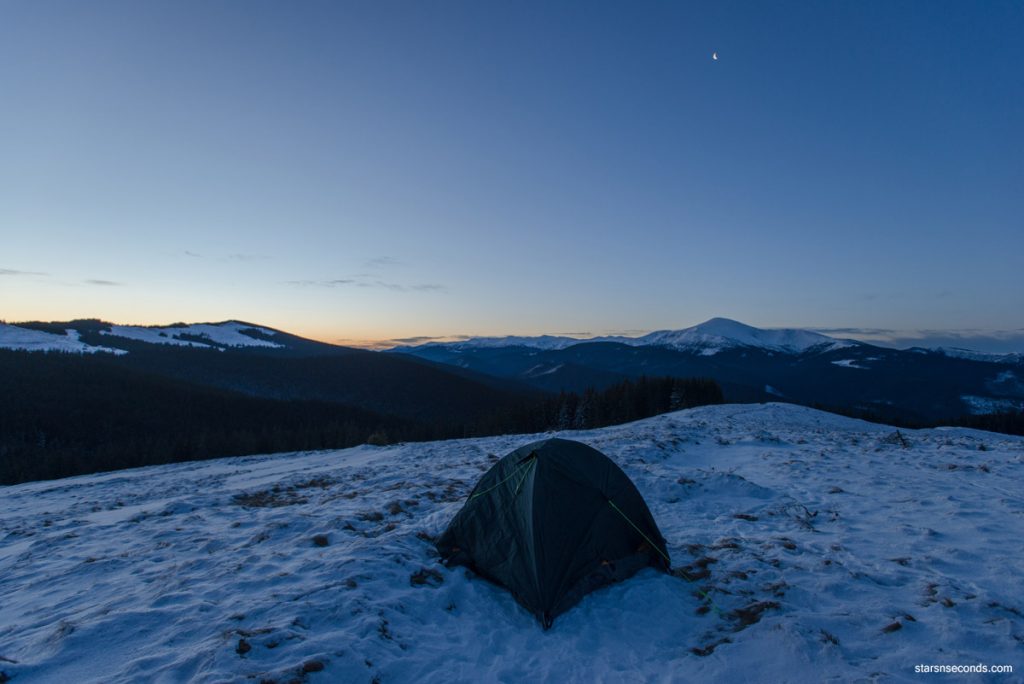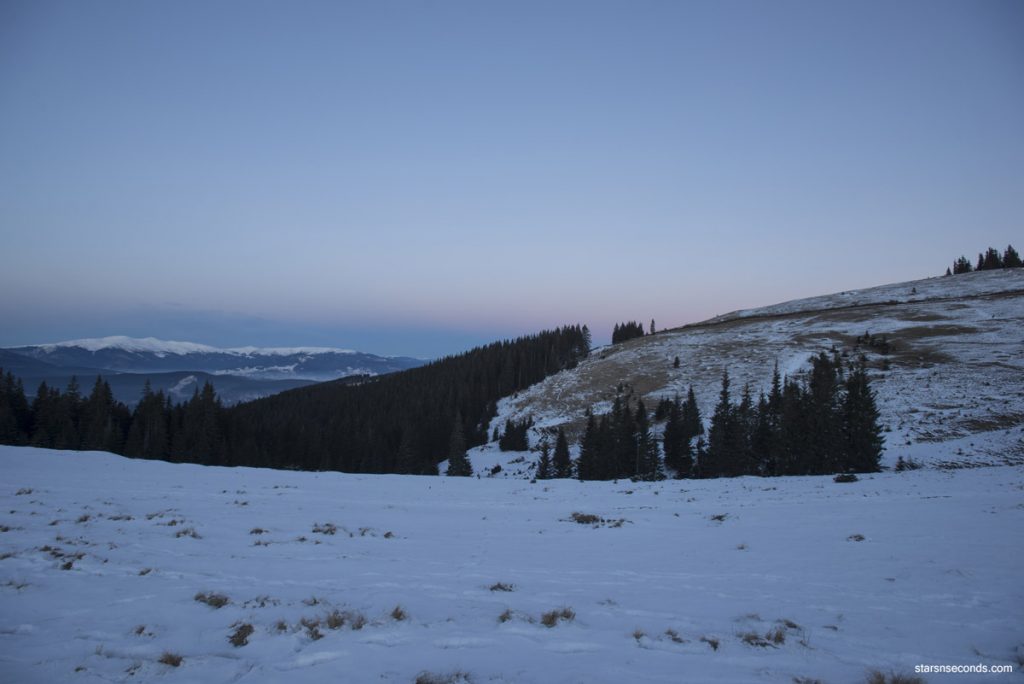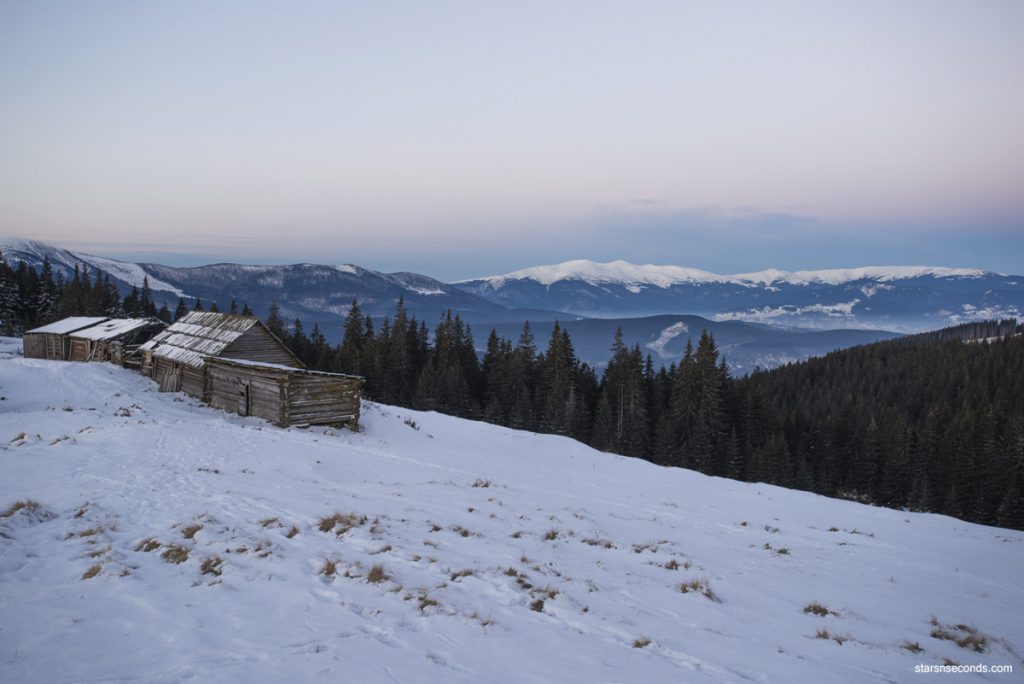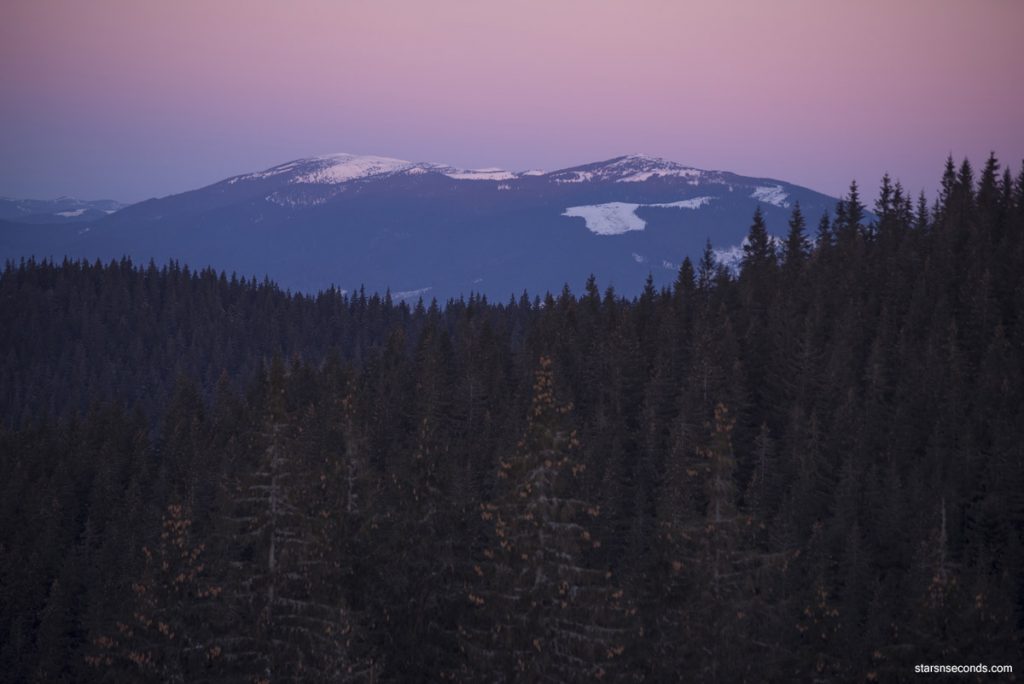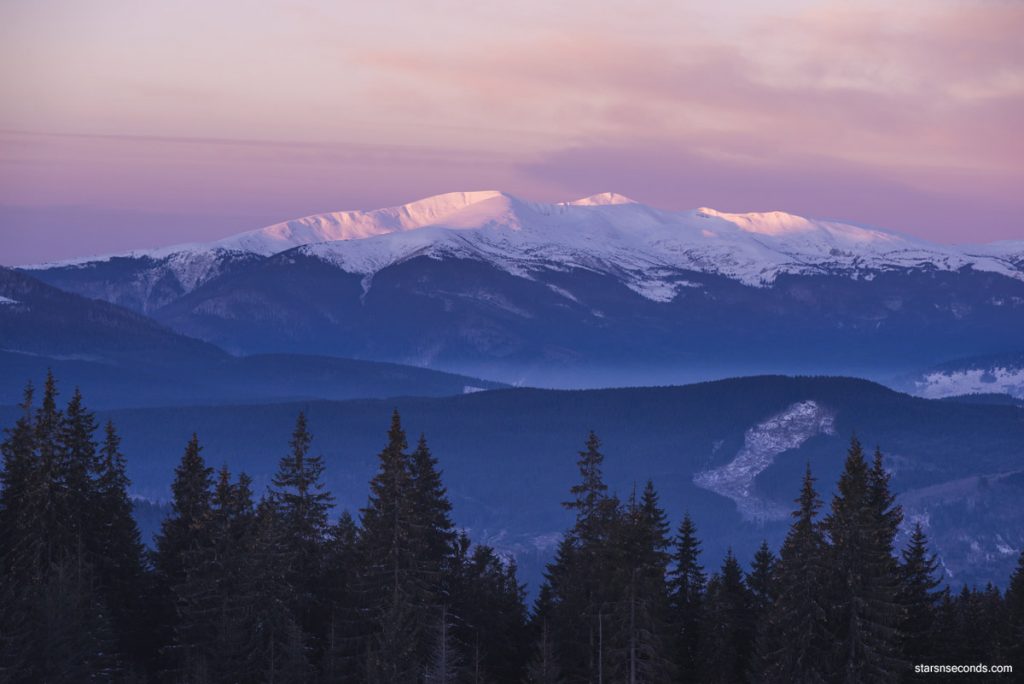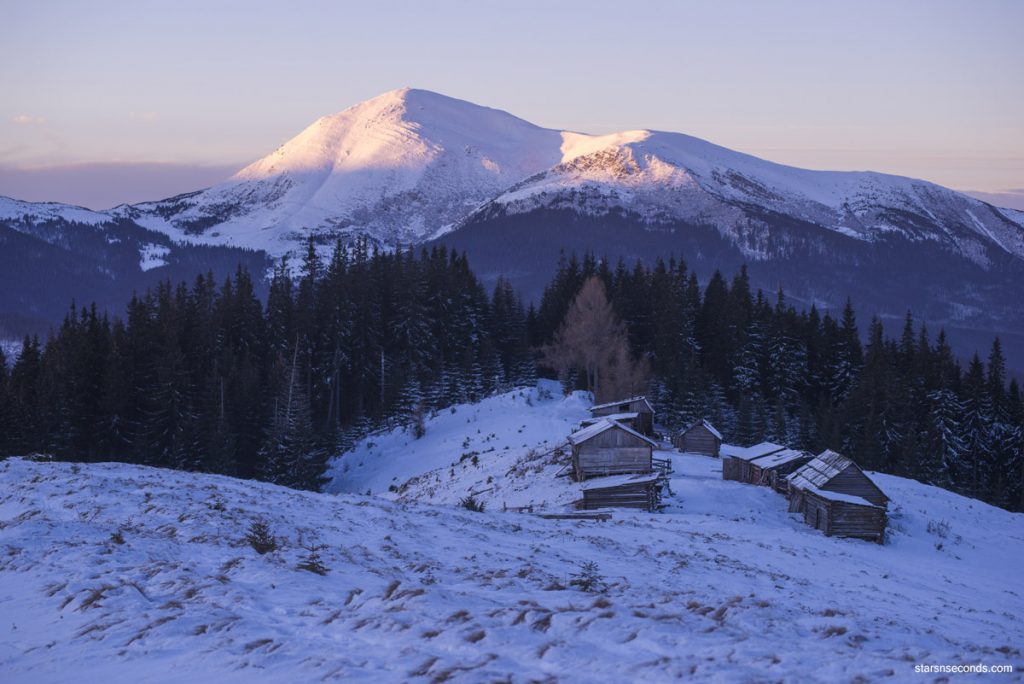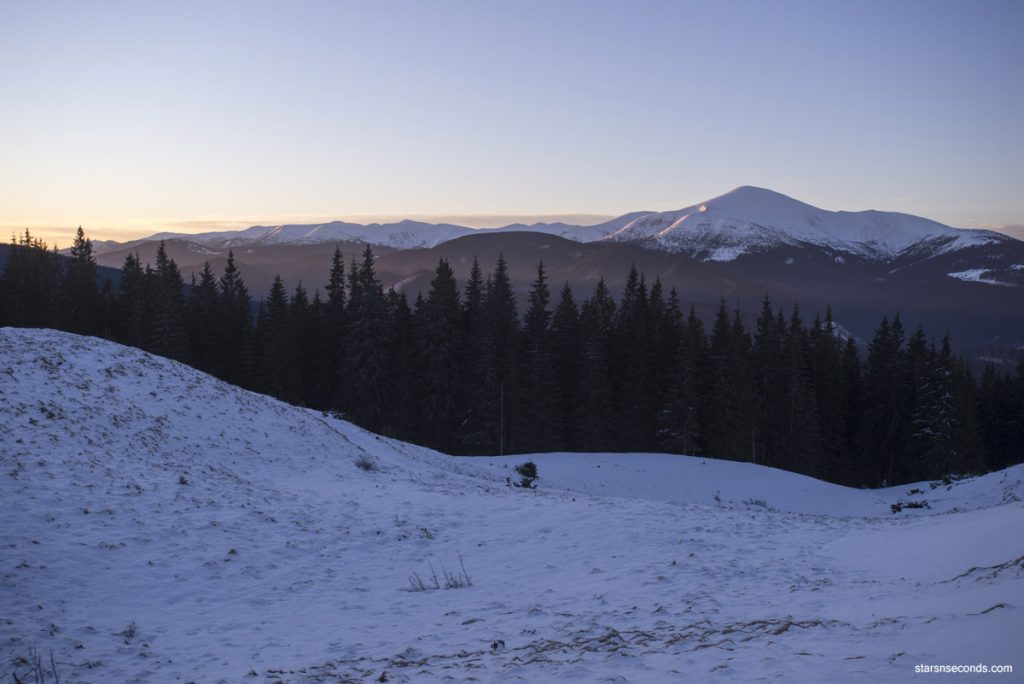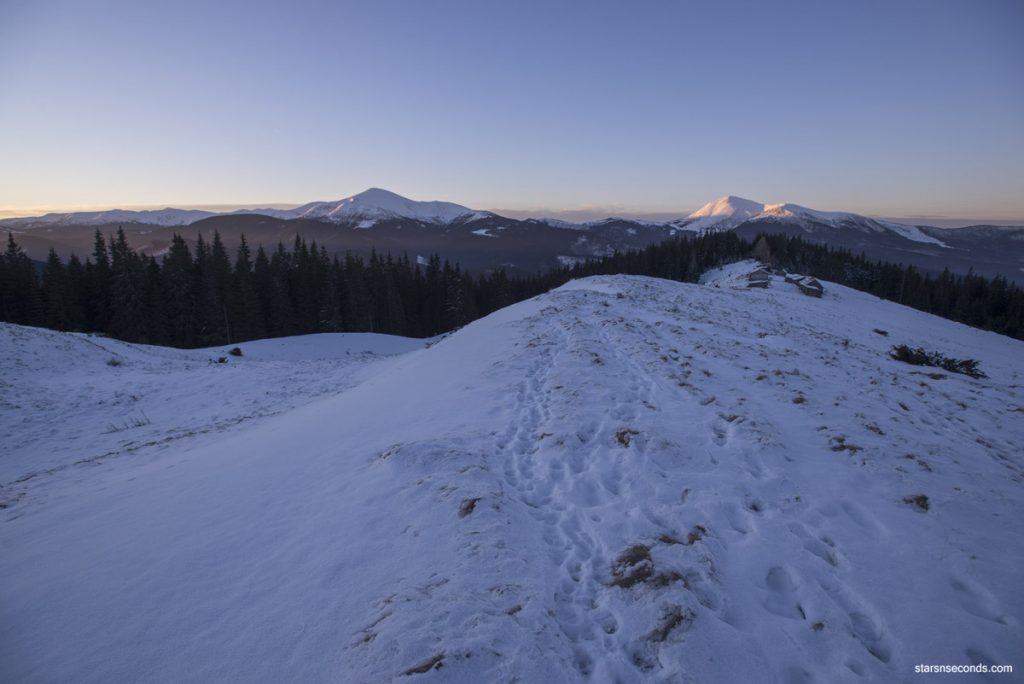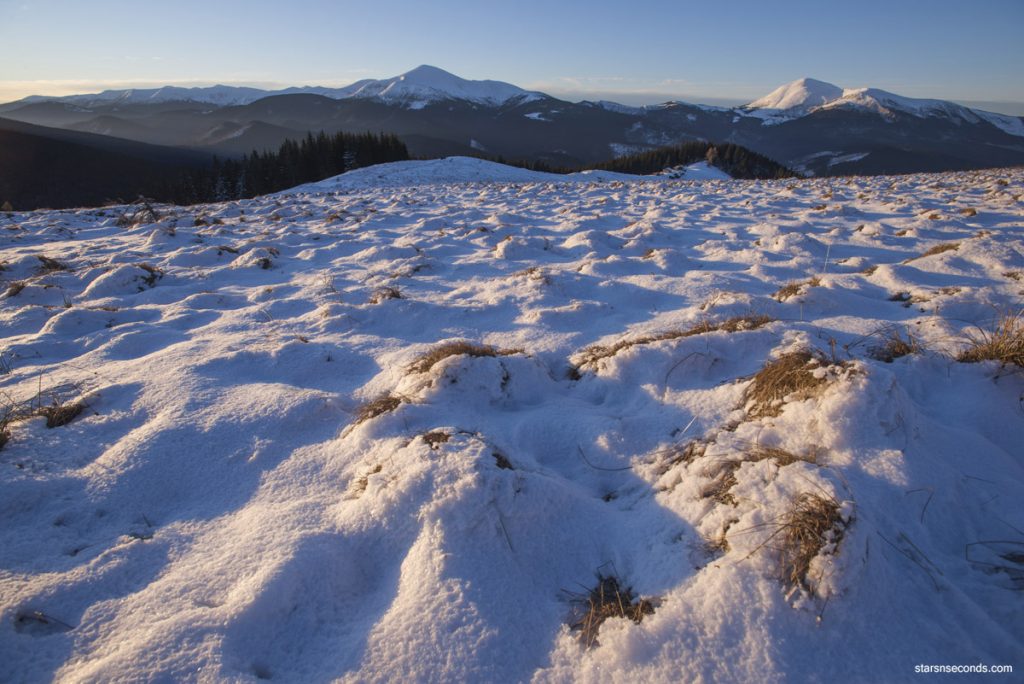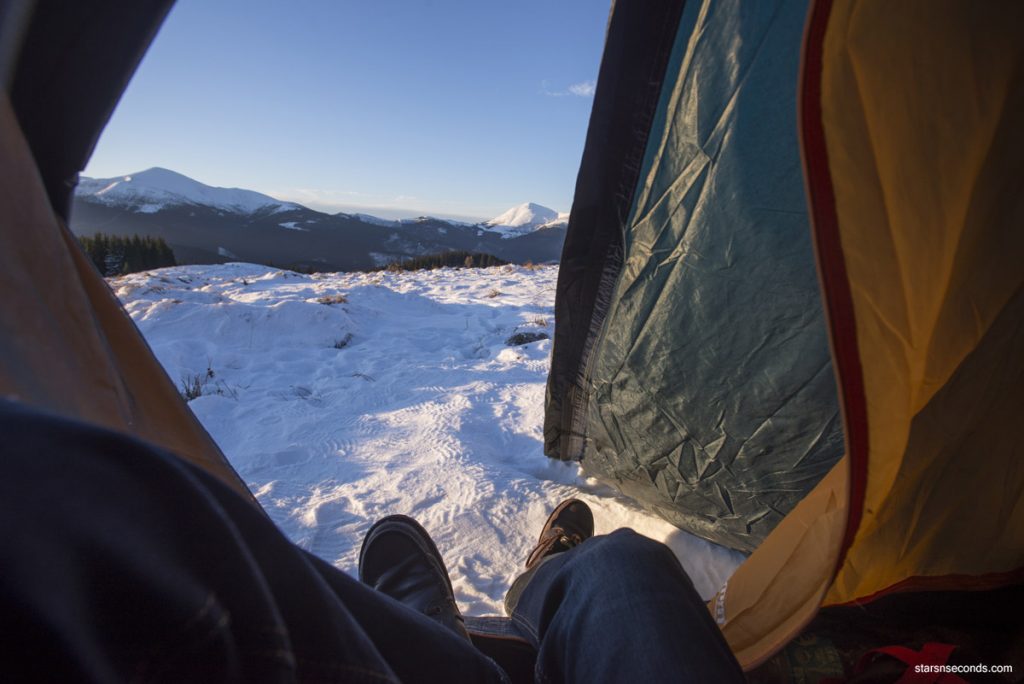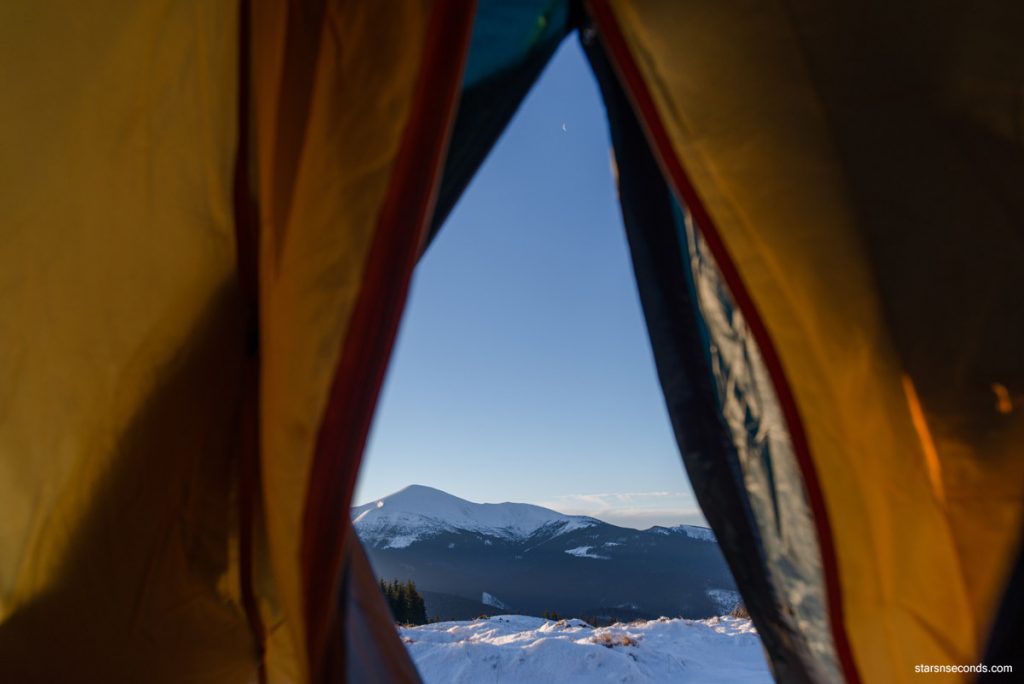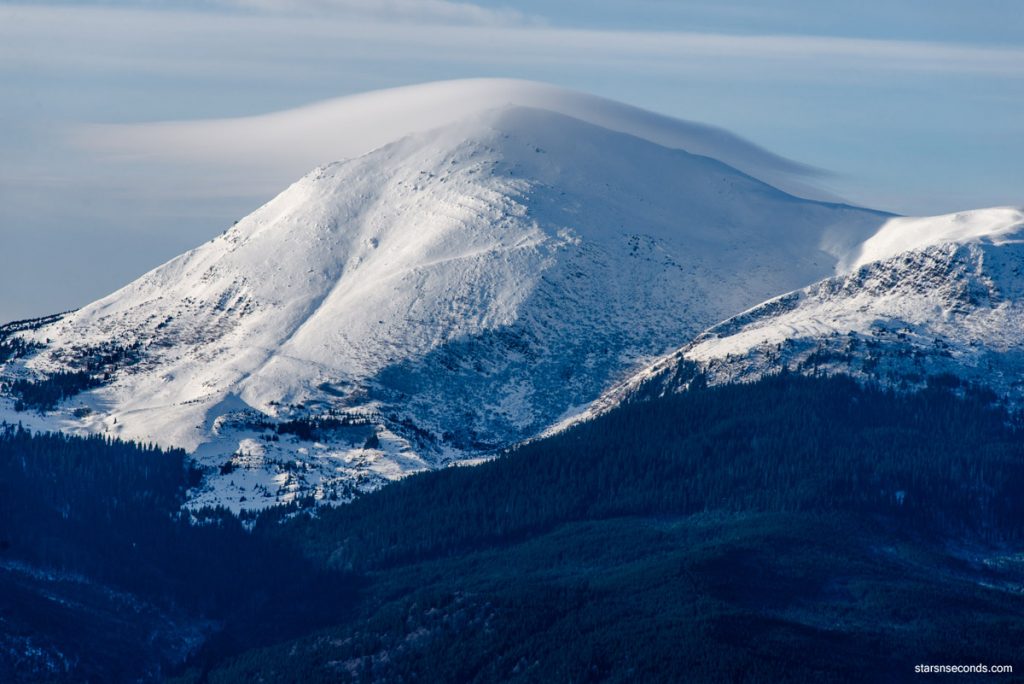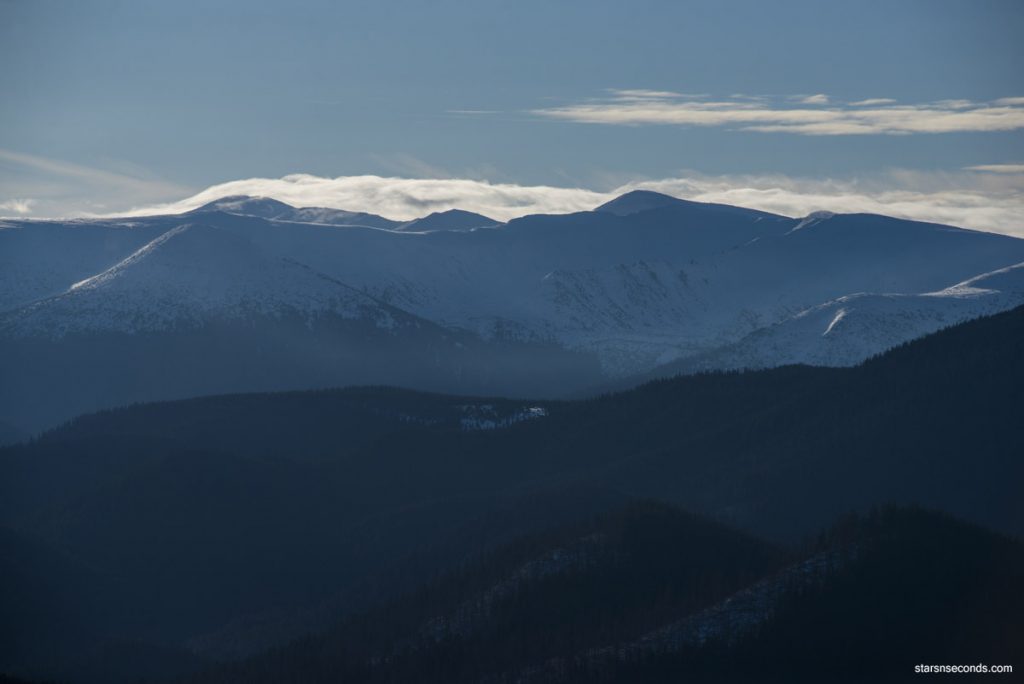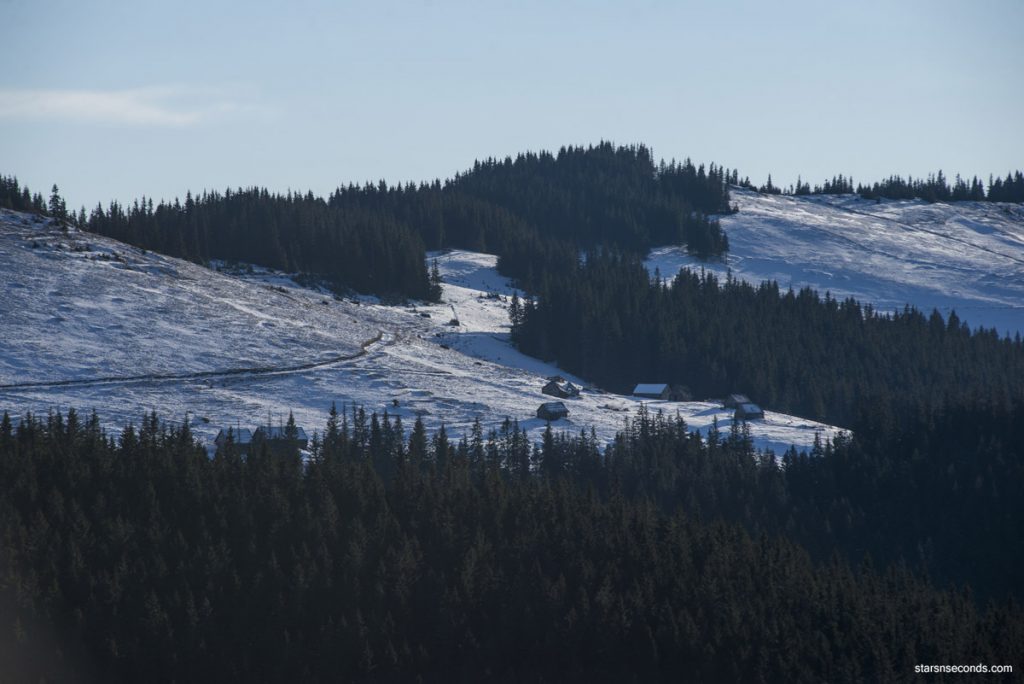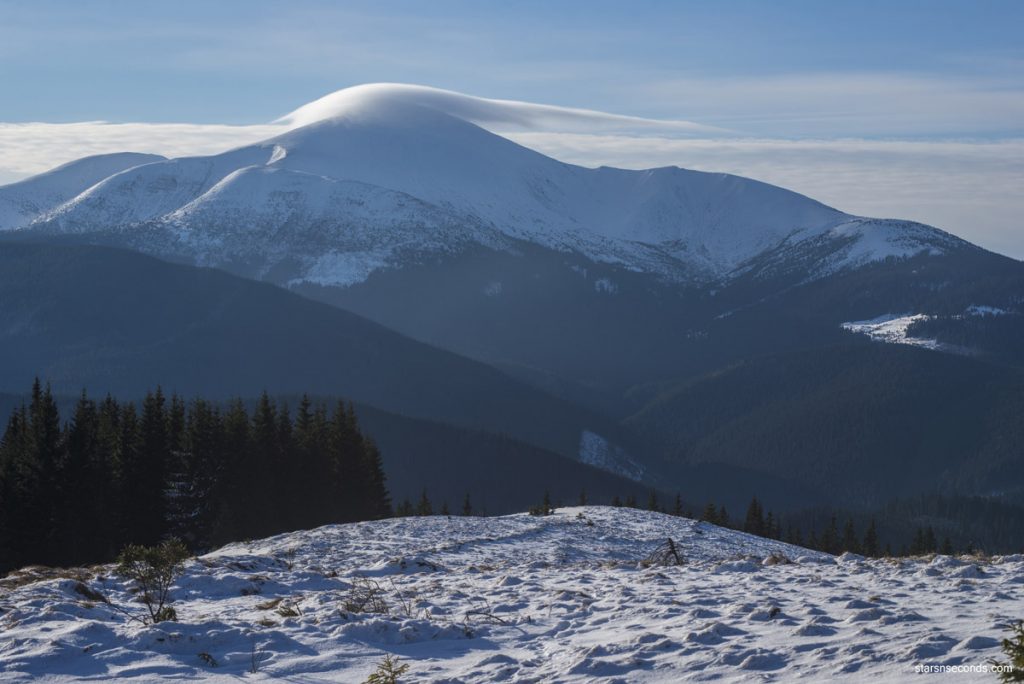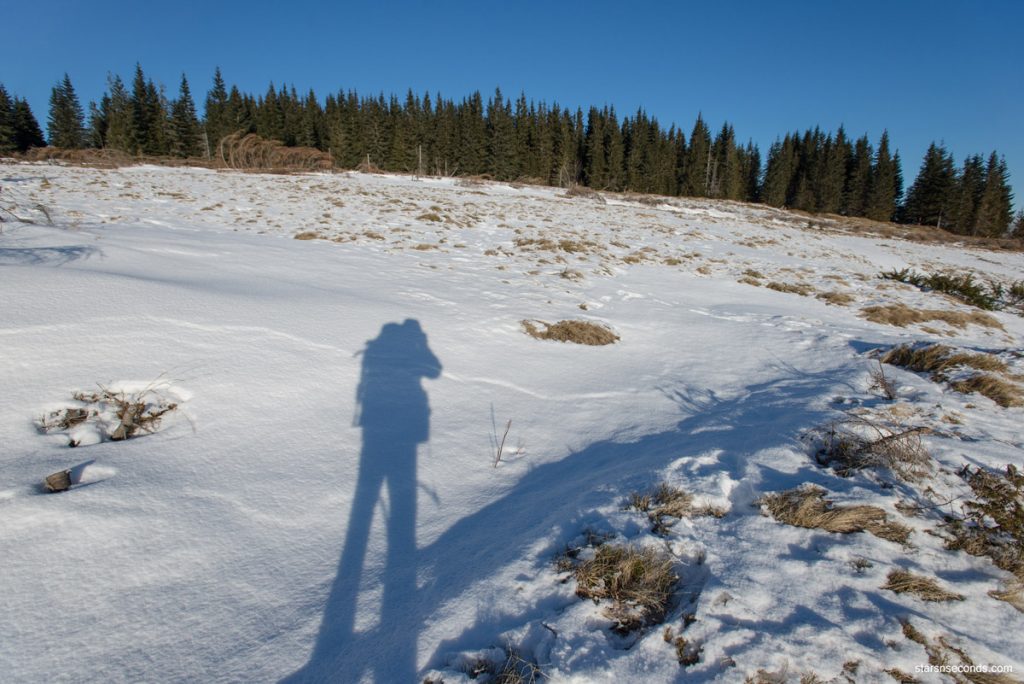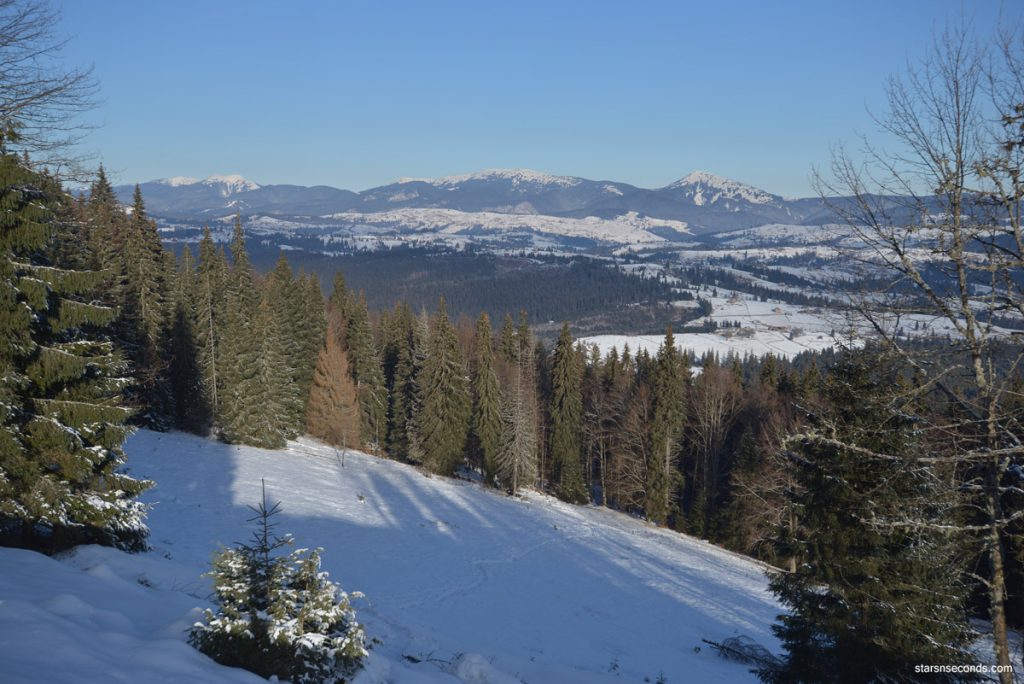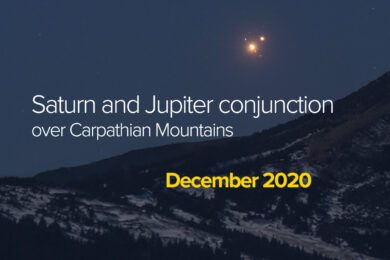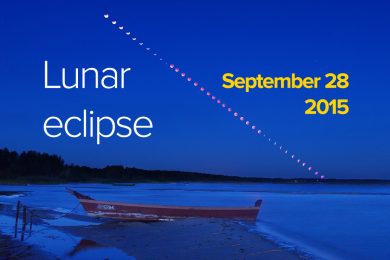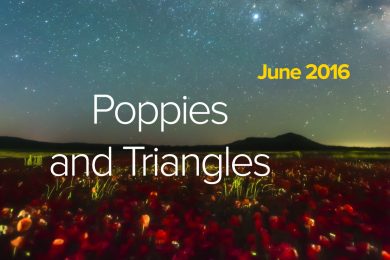Quadrantids and airglow. January 2016
I just wanted to try to catch Quadrantids for this time. This is one of the meteor showers that can be observed every year in the sky. This stream is one of the most intense and even can be compared with well-known Perseids. But Quadrantides always remain out of sight because of unfavorable winter conditions. Even if you are lucky with the weather, it might be a very cold night. Also meteors themselves in the shower are mostly small and pale.
The peak was expected at night of 4 January. Predicted the clear sky and -20ºС. I decided to take a shooting in the Carpathians, where there will be much darker sky, more beautiful landscapes and -27ºС
I had time to climb up in the evening, to start taking pictures after midnight and come back in the morning. I chose this low and compact Kukul ridge, located not far from Vorokhta. I’ve never been there.
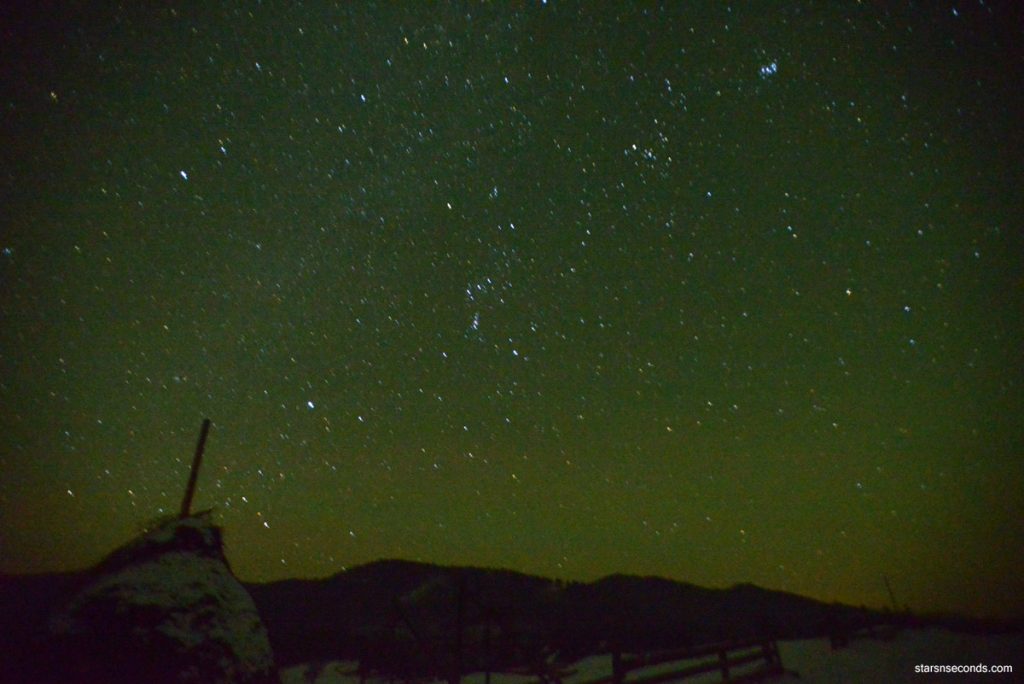
I arrived at the station Voronenko. At the entrance to the tunnel, I turned left and walked along the road that merged along the estates and suburbs. The road led me to the slope of the mountain, where the forest grew. For a while, the road is alone, and then ramified. Without paying attention to the main gauge that goes straight up, I made a mistake and went into nowhere. I determined that I needed a way somewhere in the east and broke through the forest to the goal.
I walked out on the path rather quickly, orientated and continued to climb without problems.
I set up a tent on the Hryhorivka valley. It was not easy, because while it was going, the cold was not particularly felt, but now I gradually began to freeze and did not feel fingers.
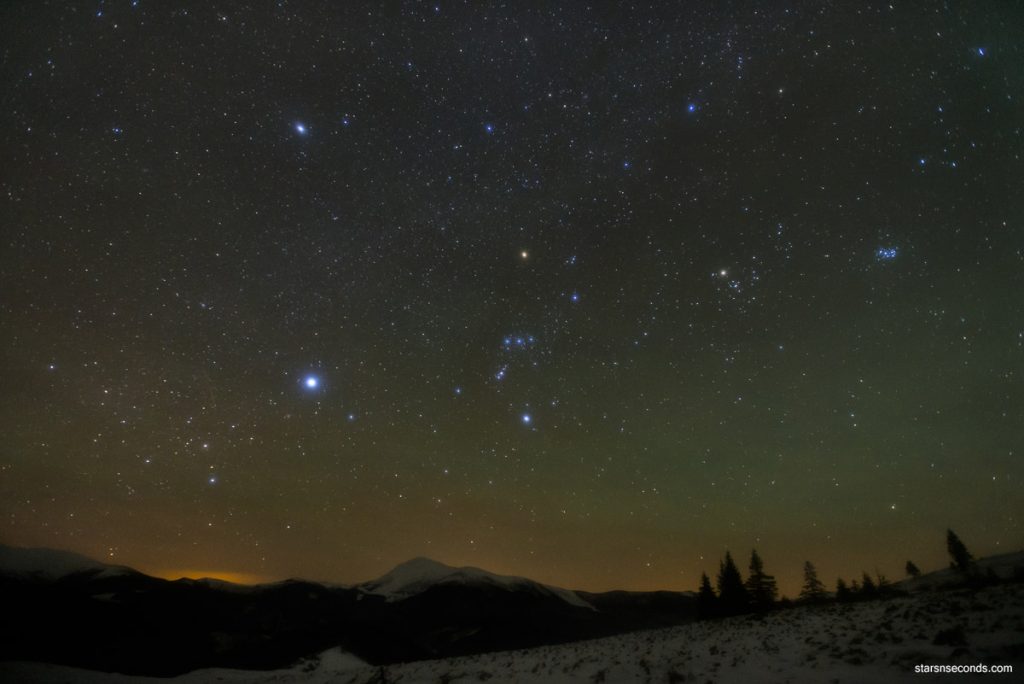
I warmed up a bit inside and took up shooting. I waited for 3AM, when the radiant of meteor shower rises high above the horizon. Meanwhile, I tried to photograph the winter constellations.
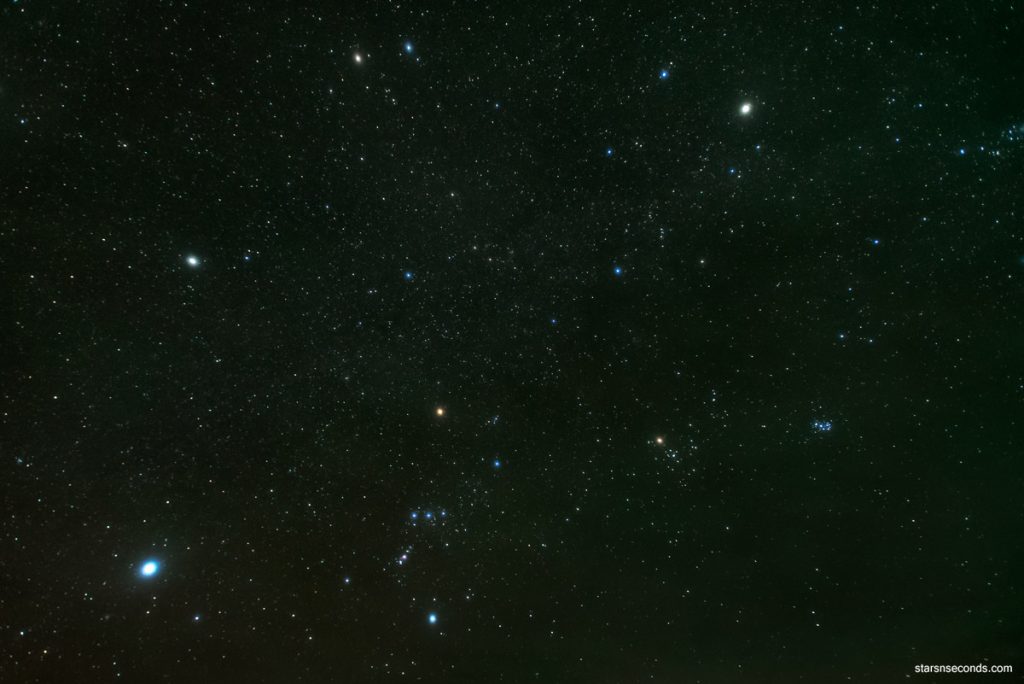
It was not easy. It is impossible to work in gloves. Camera controls are not felt at all. As a result, in a few seconds I try to set everything upside down and make trial shots, dancing around the tripod. I repeat the procedure several times until I get an acceptable result. I leave everything as it is and get back to get warmed up there.
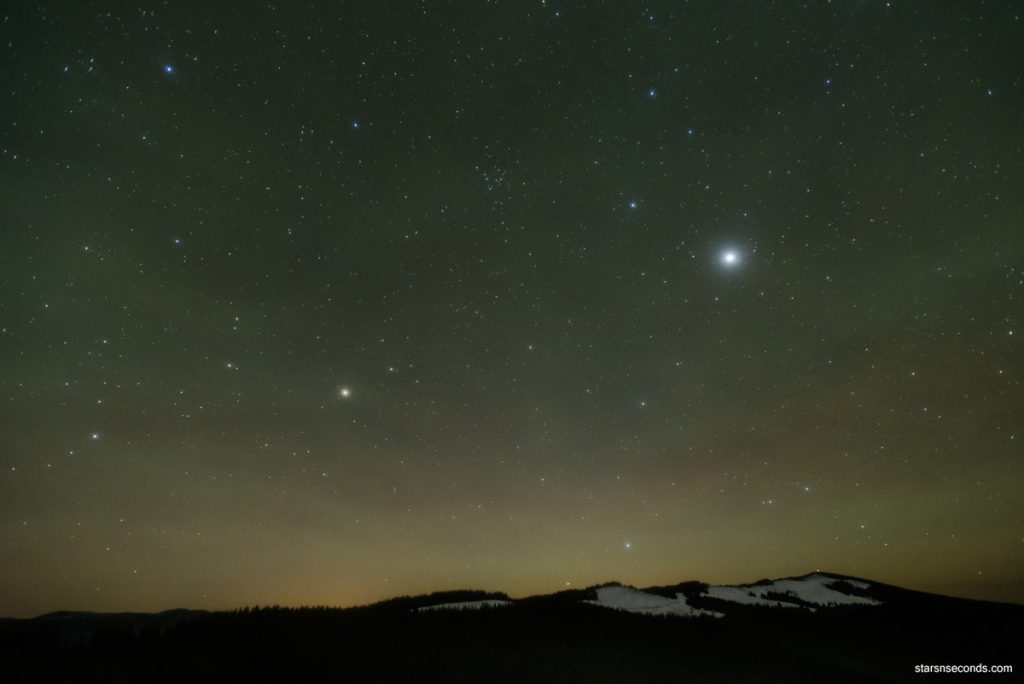
19mm, f/2.8, 15s, ISO 3200
With new forces I’m taking on a new composition with Jupiter and Arcturus.
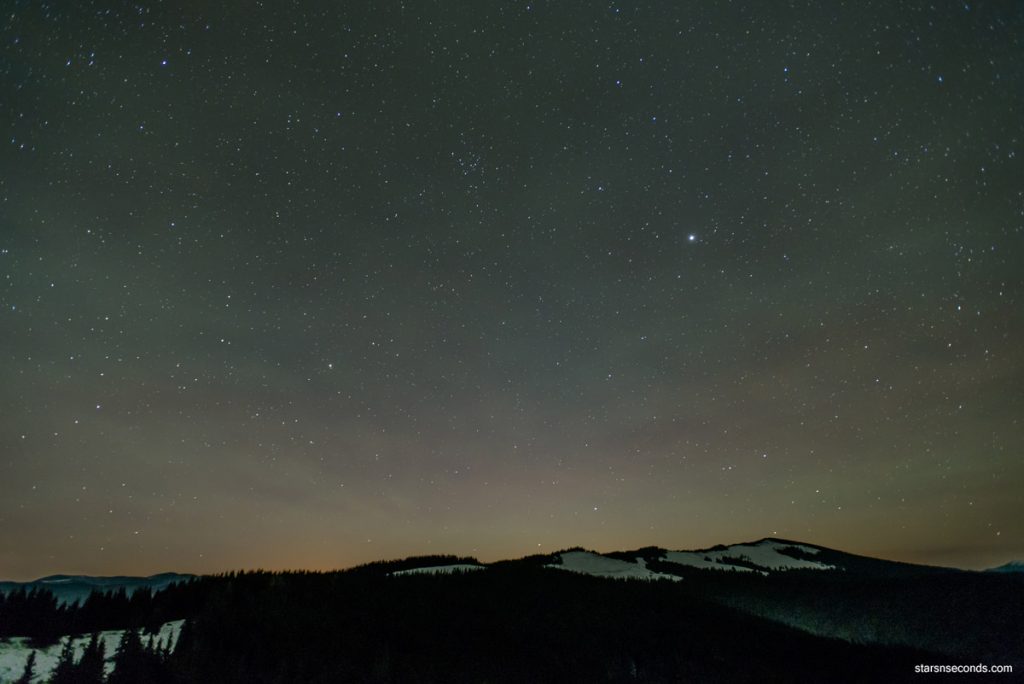
This green andred structure around the sky is not clouds, it’s actually the airglow. That night it was very intense.
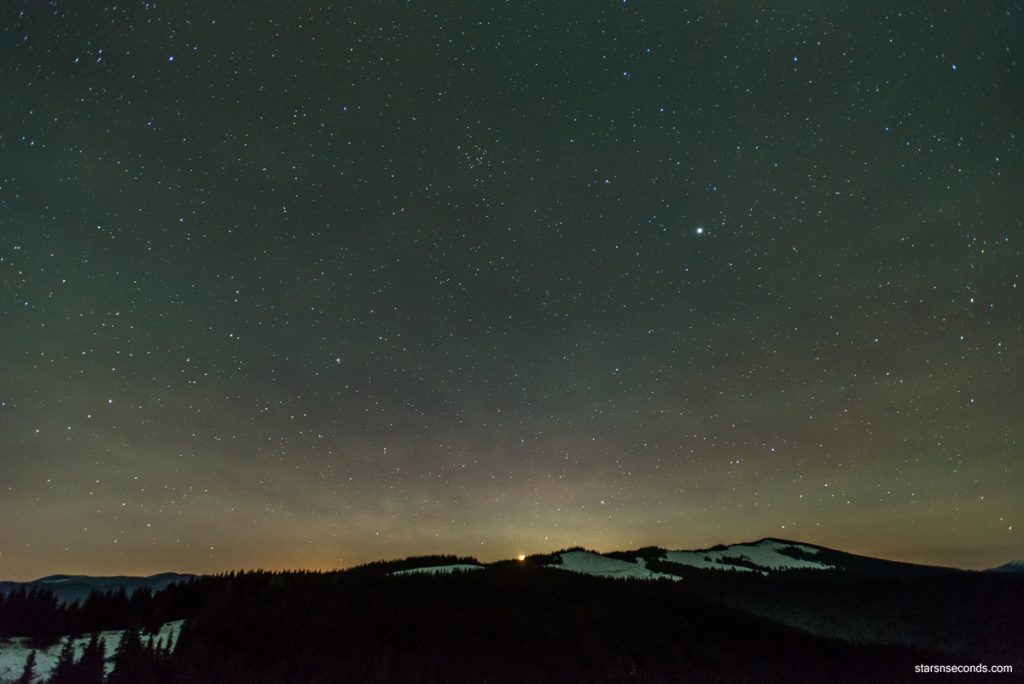
In a few minutes I notice warm light on the other side of the spine. The first thought was that someone burnt the fire. In this terrible frost suddenly became warm and joyful to the soul. In a few seconds I understand that this is just a Moon. And it became even colder : )
Frequent exits have brought my feet to such an extent that I have already ceased to feel them. The last time you set up all the techniques for serial shooting of meteors, dug into a tent, dug myself into a sleeping bag and warmed up for a very long time. I did not have a very warm outfit and helped one cunning trick. Preheat the water, pour it on small bottles, throw it inside and you will be happy : )
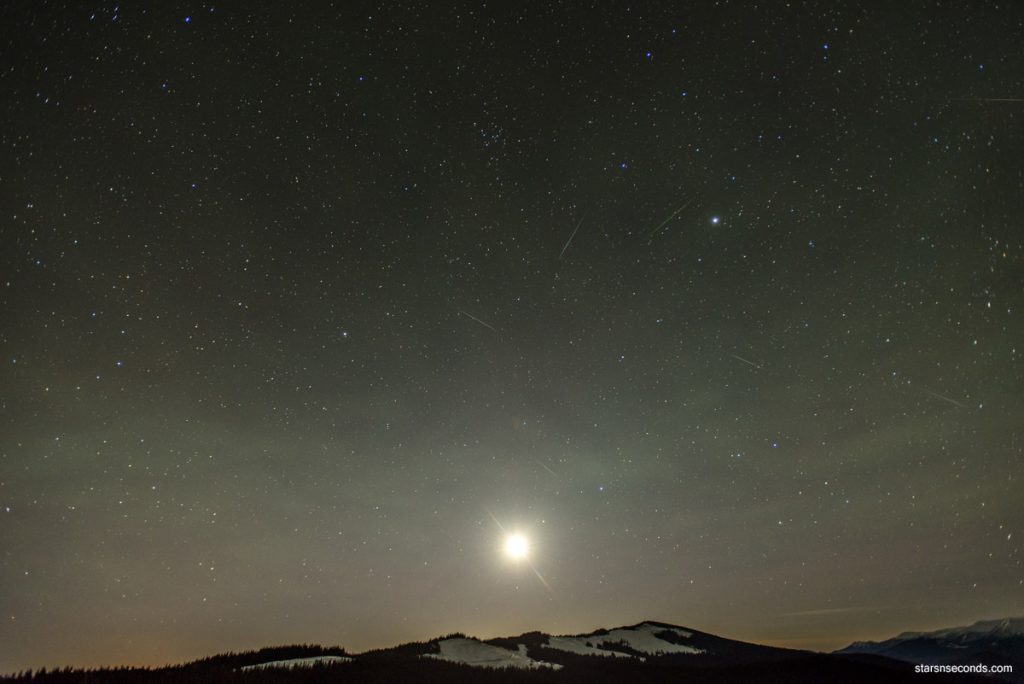
This composite image has an overview of the shooting time along one hour. There are 7 meteors here, 5 of which belong to Quadrantids, they are pale and dull. It did not impress.
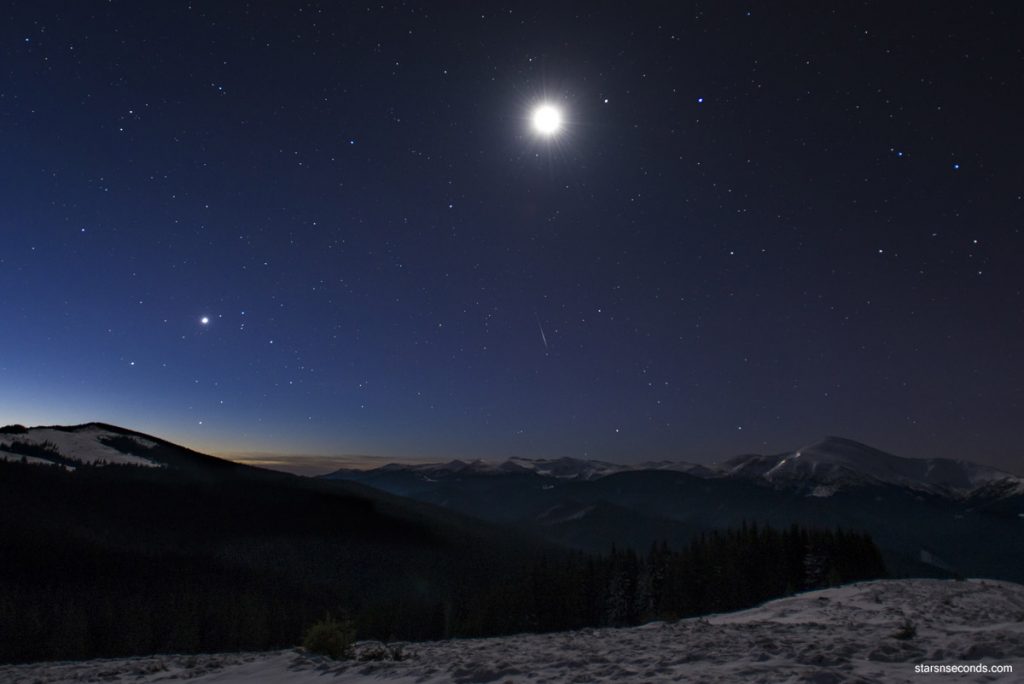
17mm, f/2.8, 10s, ISO 1000
At these temperatures, the batteries are discharged very quickly. I decided to hold the last charge in the morning. When I created a panorama in the direction of the Chornohora ridge, another quadrand was catched in the frame. As a result, I did not collect the panorama, but left this frame.
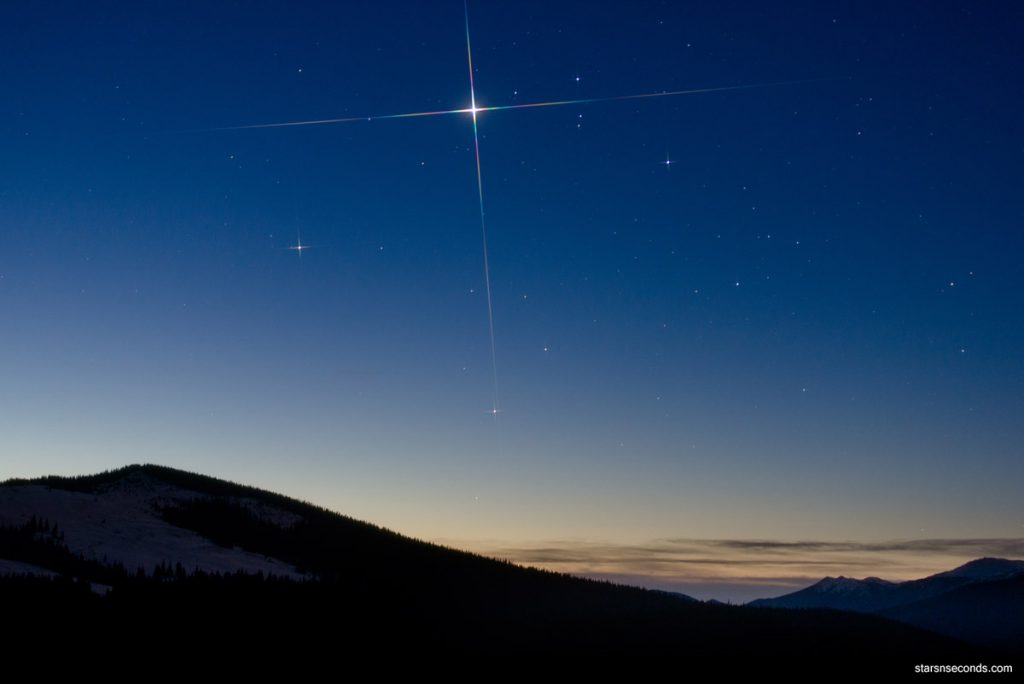
80mm, f/2.8, 5s, ISO 1000
In the south-east there was a bright Venus with Saturn in Scorpio. It looked fantastic! And it was so unusual to see this summer part of the starry sky in the middle of winter.
That’s how mount Petros looked like in the morning dusk:
A more general view with Hoverla:
It started! The night finally retreated and I got out of the tent. I began to photograph the beauty of this frosty and beautiful dawn in all directions:
Subsequently, the highest peaks began to be covered by cloudy hats, and I began to go down:
